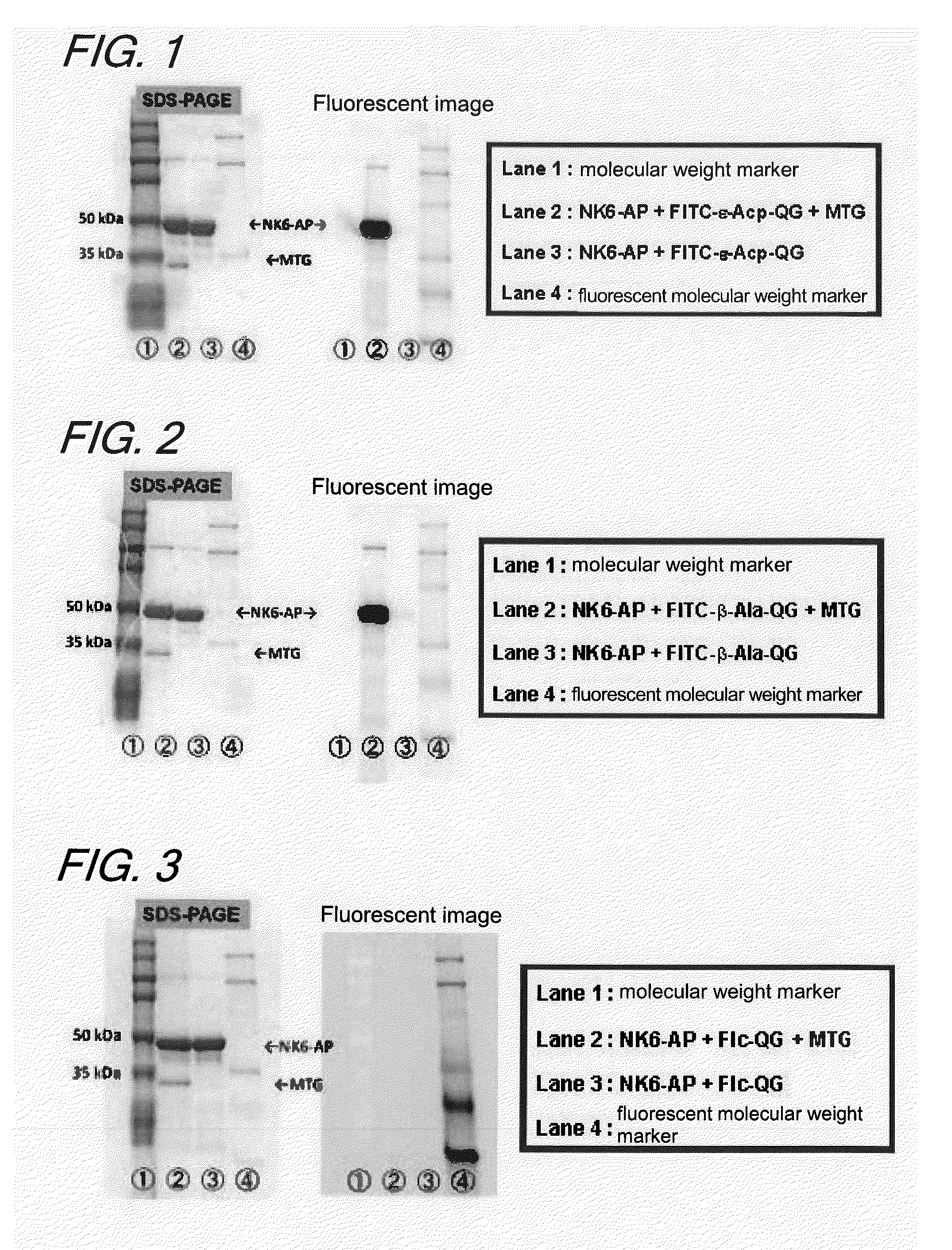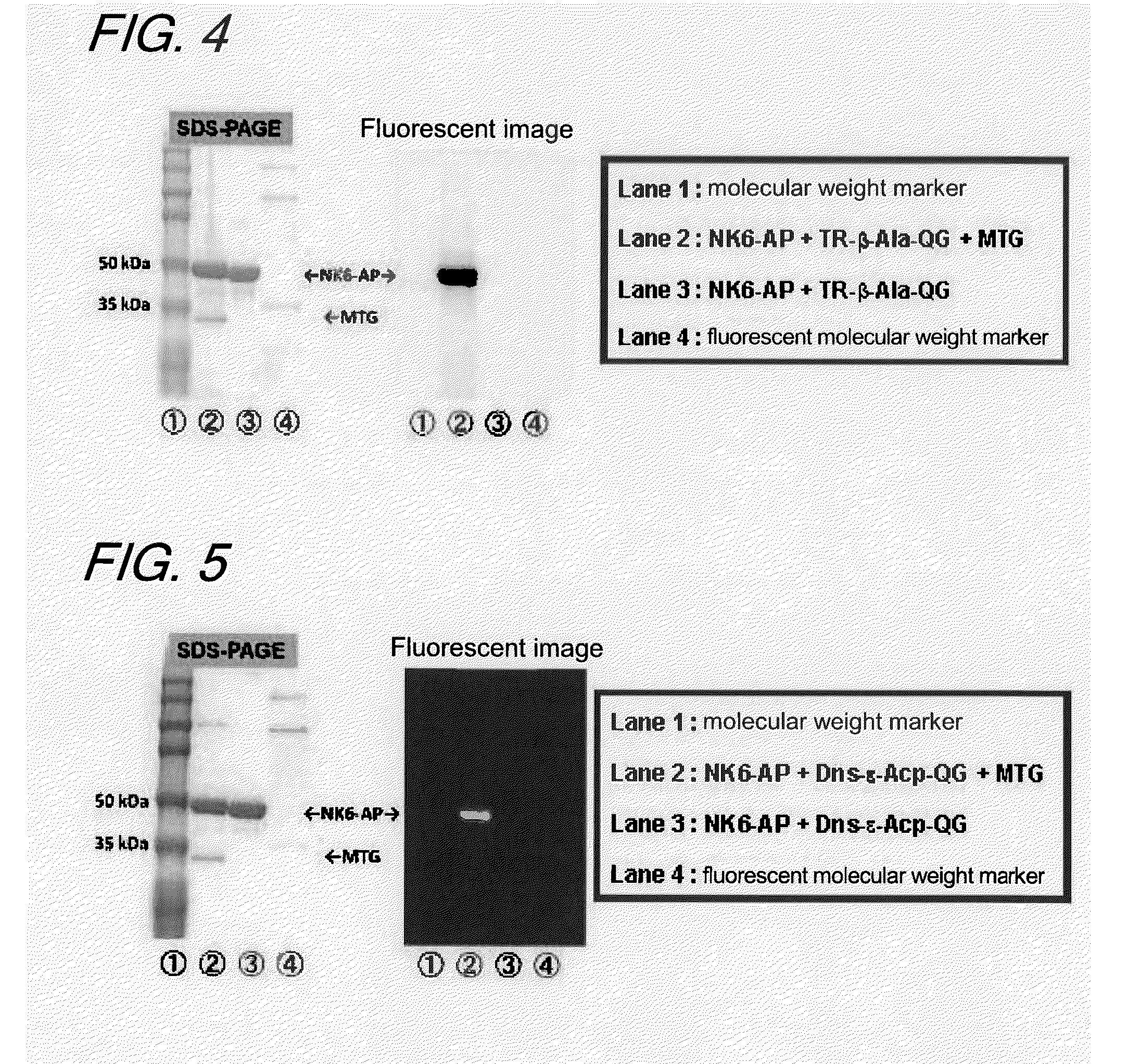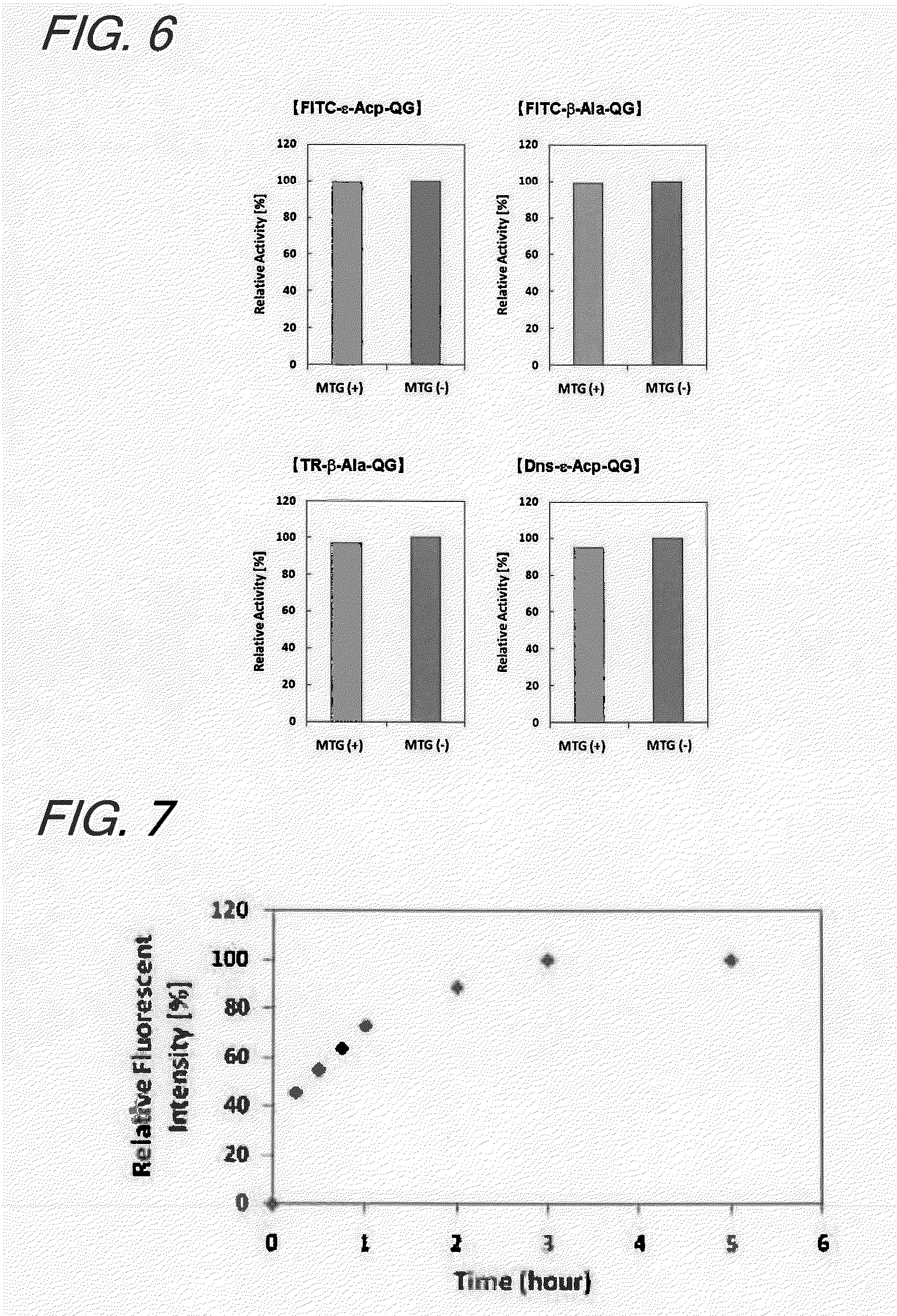Enzyme substrate for labeling of protein
a technology of enzyme substrate and protein, applied in the direction of peptide/protein ingredients, medical preparations, peptides, etc., can solve the problems of loss deactivation of antigen recognition ability, and constraint on the ability of antibodies, and achieve high stability and resolution
- Summary
- Abstract
- Description
- Claims
- Application Information
AI Technical Summary
Benefits of technology
Problems solved by technology
Method used
Image
Examples
example 1
Synthesis of Fluorescent Substrates
[0124]The model of a fluorescent group was Z-QG known as a good substrate of MTG and the bulky and hydrophobic N-benzyloxycarbonyl group was replaced by fluorescein, Texas Red, and dansyl. Either no linker was used or ε-Acp (aminocaproic acid) or β-Ala was selected as a linker.
[0125]1. Synthesis of FITC-ε-Acp-QG
[0126]A peptide resin was synthesized by the Fmoc method starting with a wang resin (product of WATANABE CHEMICAL INDUSTRIES, LTD.) and using a fully automatic solid-phase synthesizer of ABI 433A model. Fmoc-Gly and Fmoc-Gln (Trt) (products of PEPTIDE INSTITUTE INC.), Fmoc-ε-Acp (product of WATANABE CHEMICAL INDUSTRIES, LTD.) and fluorescein-4-isothiocyanate (product of DOJINDO) were used.
[0127]The resulting peptide resin was treated with TFA / H2O / triisopropylsilane (95:5:5) at room temperature for 1.5 hours and sliced to obtain a crude peptide.
[0128]The resulting crude peptide was purified by gradient elution on a reverse-phase HPLC column (...
example 2
Reactivity of Fluorescent Substrates with Proteins in MTG-Catalyzed Reaction
[0155]1. Introduction
[0156]In this Example, a study was made to see whether a Gln-containing fluorescent substrate and an enzyme into which a Lys tag was introduced by a genetic engineering technique would be modified in a site-specific manner; after it was verified that the fluorescent substrate was a substrate recognizable by MTG, the effect of the introduction on the enzymatic activity was investigated. In addition, to show the independency of the fluorescent substrate on the origin of TGase that would recognize it, a study was also made to evaluate the reactivity of the fluorescent substrate for GTG, a TGase derived from the guinea pig liver.
[0157]An alkaline phosphatase (AP) a native type of which is known to be incapable of acting as a substrate of MTG was selected as a model protein.
[0158]It is known that AP, when a Lys tag is introduced at the N terminal by a genetic engineering technique, becomes a ...
example 3
MTG-Catalyzed Introduction of Fluorescent Substrate into Antibodies
[0201]1. Introduction
[0202]In this Example, an attempt was made to introduce a fluorescent substrate directly into antibodies by MTG catalysis; the antibodies were yet to be subjected to recombination or fragmentation.
[0203]2. Experiment
[0204]2-1. Reagents
[0205]Various antibodies were purchased from COSMO BIO; the AP substrate ECF was purchased from GE Healthcare Bio-Science; 96-well microplates were purchased from Nunc; 1 ml HiTrap NHS-activated HP was purchased from GE Healthcare Bio-Science; ethanolamine was purchased from Wako. The other reagents were also commercially available.
[0206]2-2. MTG-Catalyzed Introduction of Fluorescent Substrates into Antibodies
[0207]A fluorescent substrate (FITC-ε-Acp-QG, FITC-β-Ala-QG, TR-β-Ala-QG or Dns-δ-Acp-QG), mouse-derived anti-lysozyme IgG2a antibody (monoclonal) and MTG were added to a 10 mM phosphate buffer (pH 7) to give respective final concentrations of 1 mM, 0.5 mg / ml a...
PUM
| Property | Measurement | Unit |
|---|---|---|
| concentrations | aaaaa | aaaaa |
| temperature | aaaaa | aaaaa |
| pH | aaaaa | aaaaa |
Abstract
Description
Claims
Application Information
 Login to View More
Login to View More - R&D
- Intellectual Property
- Life Sciences
- Materials
- Tech Scout
- Unparalleled Data Quality
- Higher Quality Content
- 60% Fewer Hallucinations
Browse by: Latest US Patents, China's latest patents, Technical Efficacy Thesaurus, Application Domain, Technology Topic, Popular Technical Reports.
© 2025 PatSnap. All rights reserved.Legal|Privacy policy|Modern Slavery Act Transparency Statement|Sitemap|About US| Contact US: help@patsnap.com



